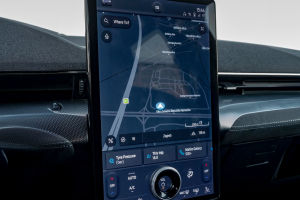When we think about car design, we often imagine sleek bodies, powerful engines, and cutting-edge features. But behind every beautiful design, there's one factor that's crucial in modern automotive engineering: aerodynamics.
As we aim to make cars more efficient, safer, and faster, the role of aerodynamics has never been more important.
By understanding how air interacts with a car's body, we can improve fuel efficiency, reduce emissions, and enhance the overall performance of vehicles. So, what exactly does aerodynamics do for us in modern car design, and why does it matter so much?
The Basics of Aerodynamics in Cars
At its core, aerodynamics refers to the study of how air flows around and through an object—in this case, a car. When we drive, air resistance (or drag) is a significant force that slows the vehicle down, requiring more energy to maintain speed. Cars with poor aerodynamic design face increased drag, leading to higher fuel consumption and reduced performance. That's why automakers have spent decades refining the design of car bodies, focusing on how air moves over the surface, around the wheels, and under the vehicle.
We can see the effects of aerodynamics in every aspect of car design, from the shape of the front grill to the rear spoiler. Smooth, rounded contours reduce drag, while sharp edges increase turbulence and resistance. The goal is to minimize drag and turbulence while maximizing downforce, which helps the car stay stable at higher speeds.
Aerodynamics and Fuel Efficiency
One of the biggest benefits of aerodynamics in car design is improved fuel efficiency. As we become more conscious of environmental issues and rising fuel prices, fuel economy is a critical factor for consumers. Cars with more aerodynamic designs experience less drag, meaning they require less power to maintain speed, thus consuming less fuel.
For example, electric vehicles (EVs) like the Tesla Model S and the Lucid Air rely heavily on aerodynamics to extend their range. The smoother the design, the less energy is required to overcome air resistance, which is especially important for electric cars that depend on battery power. Even small tweaks to the car's body, like the integration of smooth underbody panels and active air shutters, can make a significant difference in range.
Aerodynamics and Performance
Aerodynamics also plays a critical role in a car's overall performance, particularly at high speeds. When a car is moving at fast speeds, its aerodynamic properties determine how well it handles wind forces. For sports cars, this is especially important. High-performance vehicles like the Ferrari 488 or Porsche 911 GT3 have specialized aerodynamic features, such as front splitters, rear diffusers, and spoilers, which generate downforce. Downforce is the force that pushes the car down toward the road, increasing traction and stability. Without sufficient downforce, the car would risk losing control or experiencing reduced grip, especially when cornering at high speeds.
In motorsports, where every fraction of a second counts, aerodynamics can be the difference between winning and losing. Teams spend millions of dollars on wind tunnel testing and computational fluid dynamics (CFD) simulations to optimize every aspect of the car's aerodynamics. For us regular drivers, this may not seem directly applicable, but the principles are still the same. Aerodynamic design ensures that everyday vehicles perform better in terms of stability, speed, and handling.
The Role of Aerodynamics in Safety
While aerodynamics is often associated with speed and fuel economy, it also has a significant role in vehicle safety. Modern vehicles are designed to manage airflow in ways that not only improve stability but also protect occupants in the event of a crash. Features like crumple zones and the positioning of air intakes are influenced by aerodynamic principles. A well-designed car can direct airflow around the vehicle during an accident, reducing the forces on the occupants and increasing the effectiveness of safety features like airbags.
Moreover, aerodynamic design helps with stability in crosswinds. Cars with poor aerodynamics can be more affected by wind gusts, causing them to sway or lose traction. On the other hand, vehicles designed with aerodynamics in mind remain more stable, offering a safer driving experience, especially at higher speeds or in adverse weather conditions.
The Future of Aerodynamics in Car Design
As technology continues to evolve, the future of aerodynamics in car design looks even more exciting. With the rise of autonomous vehicles and electric cars, automakers are placing even more emphasis on aerodynamics to improve efficiency and safety. Electric cars, in particular, are expected to benefit greatly from advancements in aerodynamic design, as every small reduction in drag can extend their range and performance.
We can expect to see more innovations in active aerodynamics—systems that automatically adjust certain features of the car, like spoilers or grille shutters, based on speed and driving conditions. This would allow cars to have an optimal aerodynamic profile at all times, ensuring maximum efficiency and performance.
Another exciting development is the growing use of lightweight materials. Aerodynamics isn't just about the shape of the car; the materials used in the car's construction can also impact how air flows over and around it. Lightweight materials, such as carbon fiber and aluminum, can reduce the overall weight of the car while still maintaining structural integrity. This reduces the car's need for power, which, in turn, boosts fuel efficiency and performance.
Conclusion: The Impact of Aerodynamics on Modern Cars
In conclusion, aerodynamics is no longer just a niche aspect of car design; it's at the heart of modern automotive innovation. From improving fuel efficiency to enhancing performance and safety, the role of aerodynamics is crucial in every vehicle, from everyday commuters to high-performance sports cars. As we look to the future, we can expect even more advanced aerodynamic features, making cars not only more efficient but also safer and more enjoyable to drive.
So, next time you're on the road, think about the invisible forces at work around your car, helping it glide through the air, improving your fuel efficiency, and keeping you safe. Isn't it amazing how much science goes into something as simple as driving?


